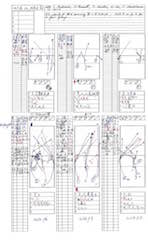Every few years, artists beleaguered by perennial lack of funding, audiences, and the time to create get hit with the Next Big Thing that will fix all three. Listservs, email blasts, podcasting, Web x.0, individual and group blogging, social media, and crowdfunding have all had their time in the spotlight just in the past ten years. After an initial rumble, prognosticators issue vaguely worded statements on how something is all the rage, that artists are behind the curve, and should be devoting more of their time to the something if they know what’s good for them. Initial experiments are conducted, advocacy groups organize seminars, there’s a flurry of interest, and in time some artists hook onto one or more of these somethings as a career before the curve flattens and disappointment sets in.
But what’s next now that everyone is sharing everything on dozens of different platforms – so much so that websites (remember them?) are 75% icons, 23% whitespace, and 2% content that hasn’t been updated since 2011?
My prediction: Big Data/Analytics
It will start with one of the usual wonks bemoaning how artists and arts organizations aren’t mining the tens of kilobytes lying untapped in their addressbooks, subscriber, and donor lists. This will be denounced as a bad thing. After all, Google, Facebook, and other major corporations are doing it and making a pile. Any who don’t or won’t will be left even farther behind. Dancers must become graph theorists, playwrights must Hadoop, and violinists must become Bayesians. All will be required to expound their data mining strategy in the application for a $250 municipal or foundation grant. Because you can’t do outreach without metrics to determine ROI.
This is the year it begins. The problems of no money, audience, or time will still be there. But, by golly, they’ll be able to measure it.

